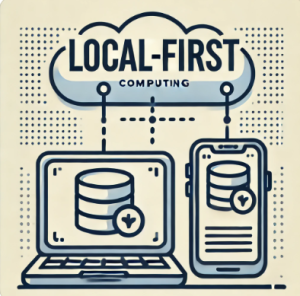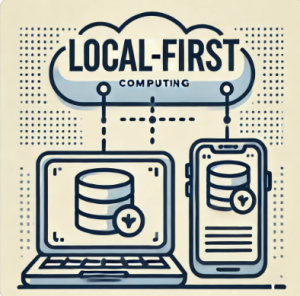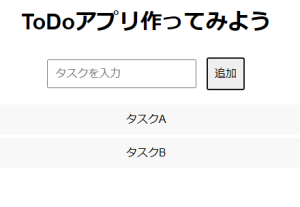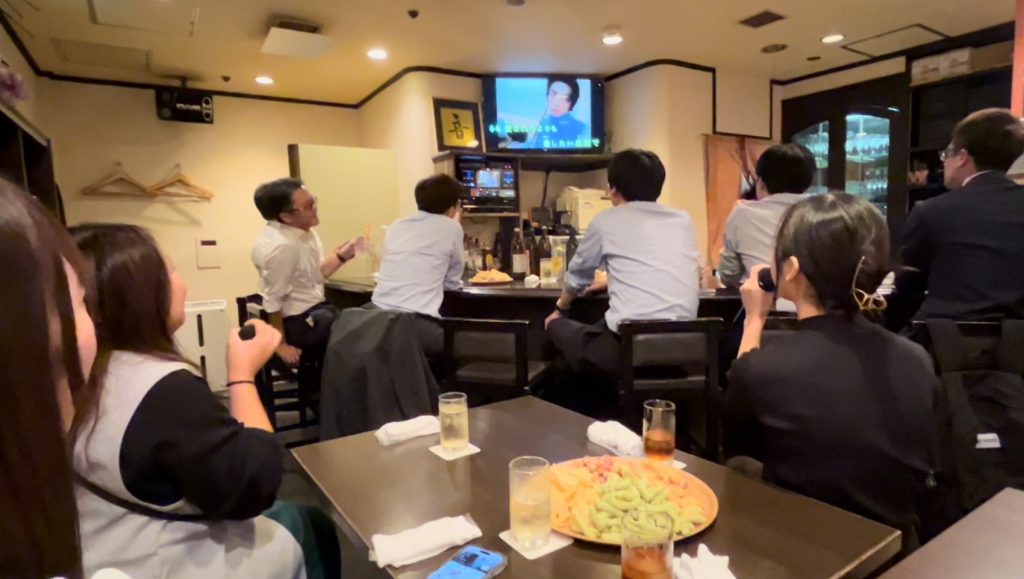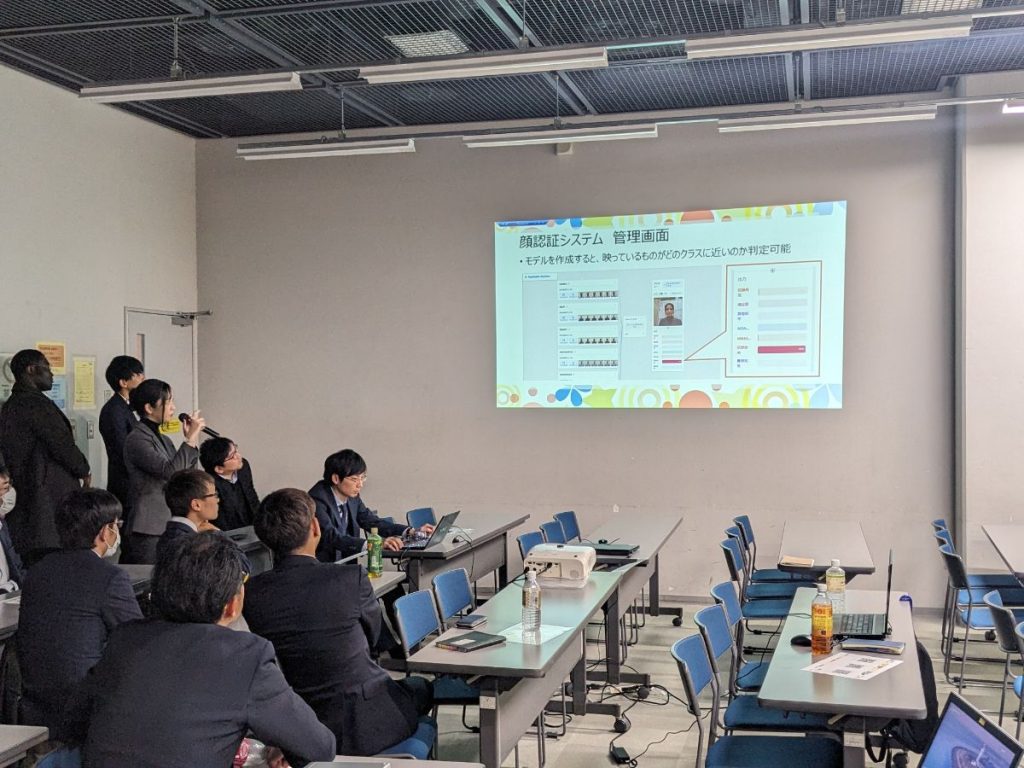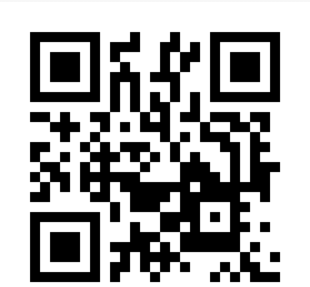Thank you for visiting our blog!
From July 26 to July 28, 2024, we went on a company trip.
This time, our destination was Kyushu (Fukuoka & Oita)!
Here’s a look at our journey.
From Chubu Centrair International Airport to Fukuoka Airport
For Dandelions, this was our first time traveling by airplane.
With about 30 participants, we were a bit worried that someone might oversleep and miss the flight, but thankfully, everyone made it on time, and we departed without any issues!

Upon arriving at Fukuoka Airport, we boarded a tour bus.
Our tour guide had a fantastic sense of humor, making the trip even more enjoyable!

Dazaifu Tenmangu Shrine
Our first stop was Dazaifu Tenmangu Shrine.
Currently, it’s making headlines due to the “Reiwa Great Renovation”, the first major restoration in 124 years, featuring a special temporary hall of worship.
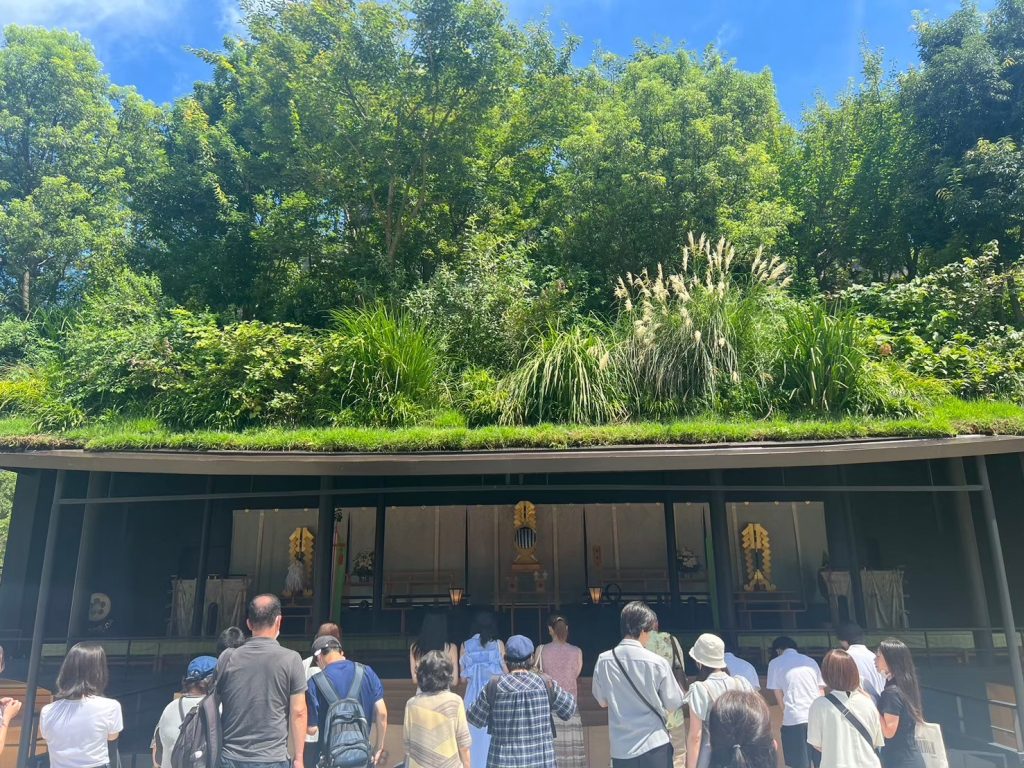
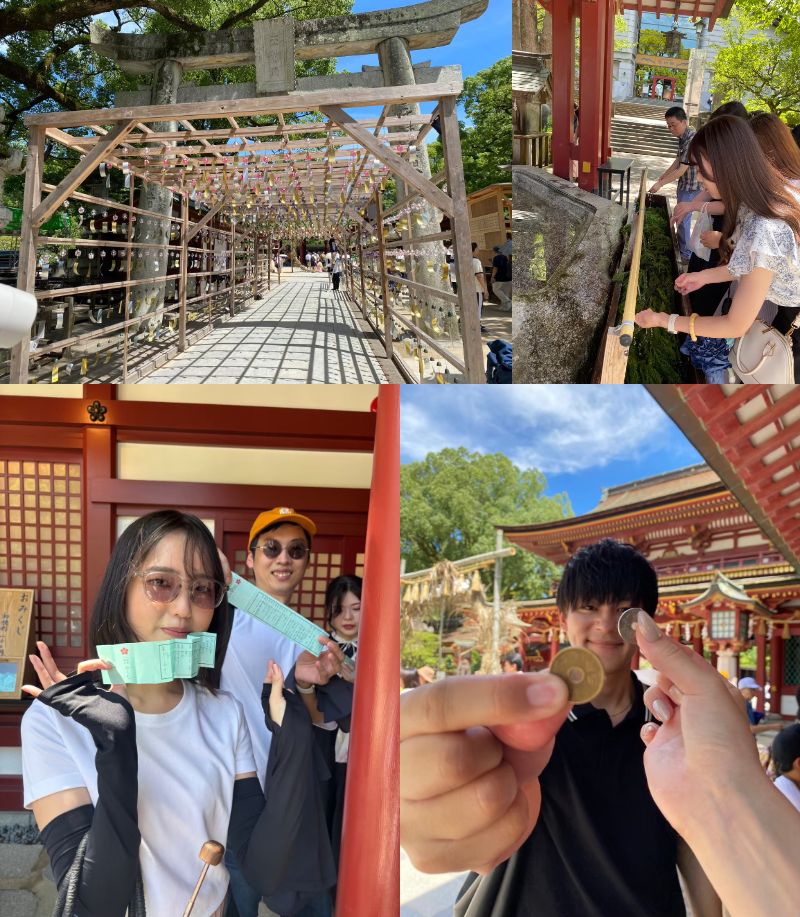

After visiting the shrine, we had some free time to explore the area.
Some enjoyed street food, while others completed their souvenir shopping based on the tour guide’s recommendations.
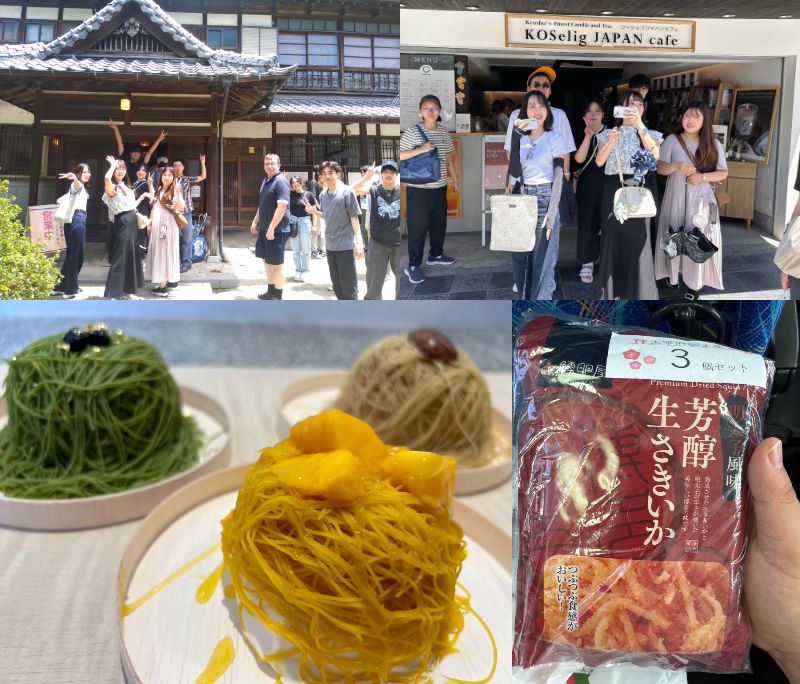
Lunch at Yushoku Kobo Chabana
For our first day’s lunch, we dined at “Yushoku Kobo Chabana”.
This traditional Japanese-style restaurant, set in a restored old house, provided a relaxing atmosphere where we enjoyed seasonal dishes.
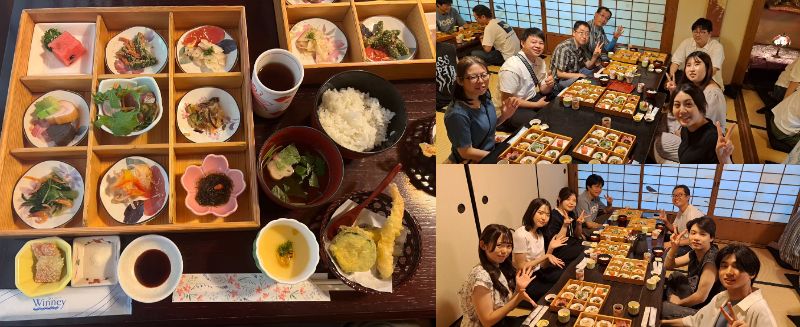
Beppu Jigoku Meguri (Hell Tour) – Part 1 (Chinoike Jigoku & Tatsumaki Jigoku)
In the afternoon, we explored two of Beppu’s famous “Hells”:
Chinoike Jigoku is said to be the oldest natural hot spring in Japan, and its striking appearance and strong smell left a powerful impression. A medicinal product called “Chinoike Ointment” was also available for limited sale.
Tatsumaki Jigoku is a geyser, designated as a natural monument of Beppu City, where hot water erupts at regular intervals. The dynamic bursts of hot water were truly spectacular.
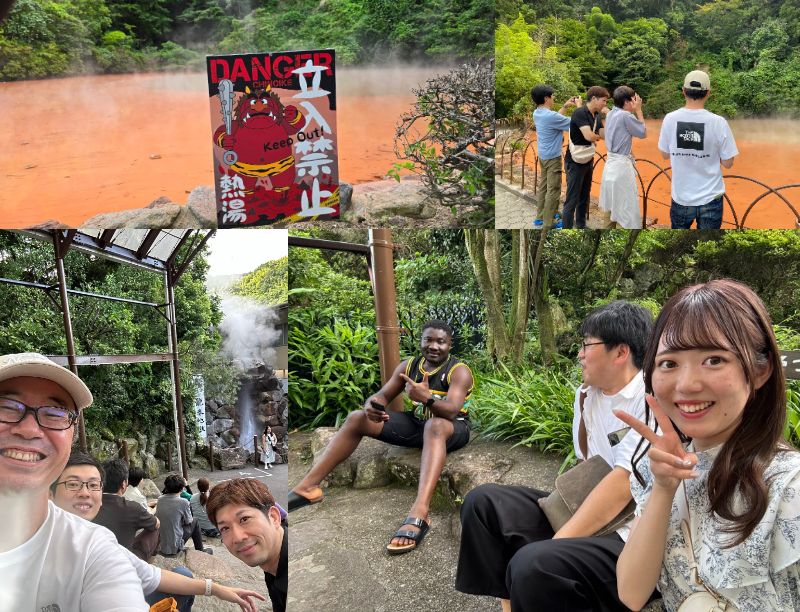

Hotel Stay: Beppu Onsen “Hotel Shiragiku”
We stayed at the famous Beppu Onsen Hotel Shiragiku.
As per Dandelions’ tradition, we held a lively company banquet, where we enjoyed a great evening together.
As a special highlight, our company president presented outstanding employees with a unique “Hell T-shirt” as a token of appreciation!
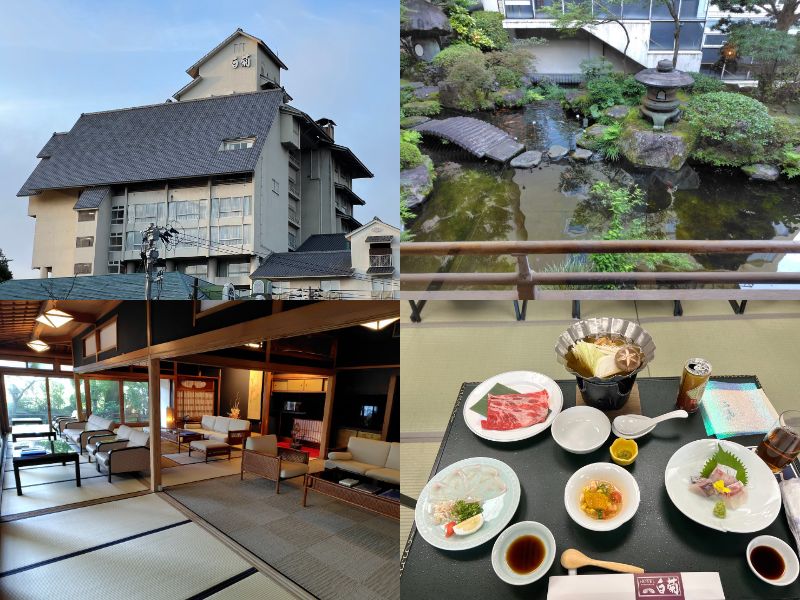
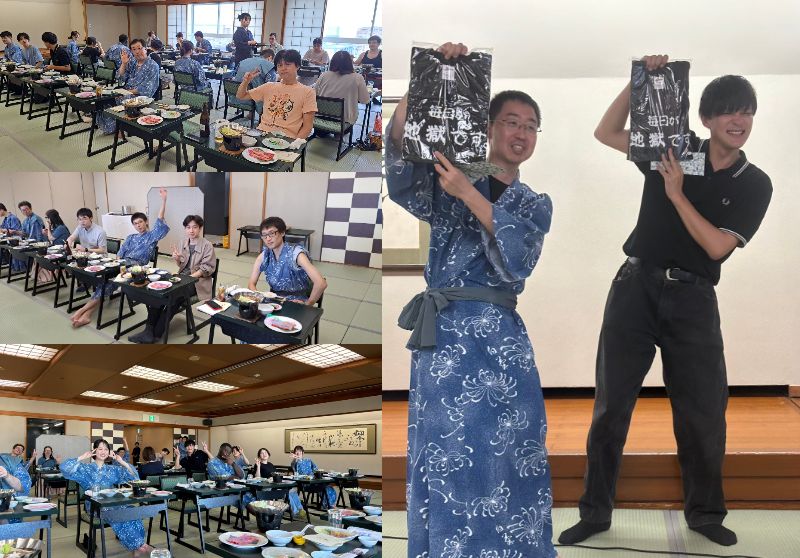
After the banquet, we ventured out into Beppu’s nightlife!

One of the notable places was “Takegawara Onsen”, which is said to have inspired Studio Ghibli’s “Spirited Away”.
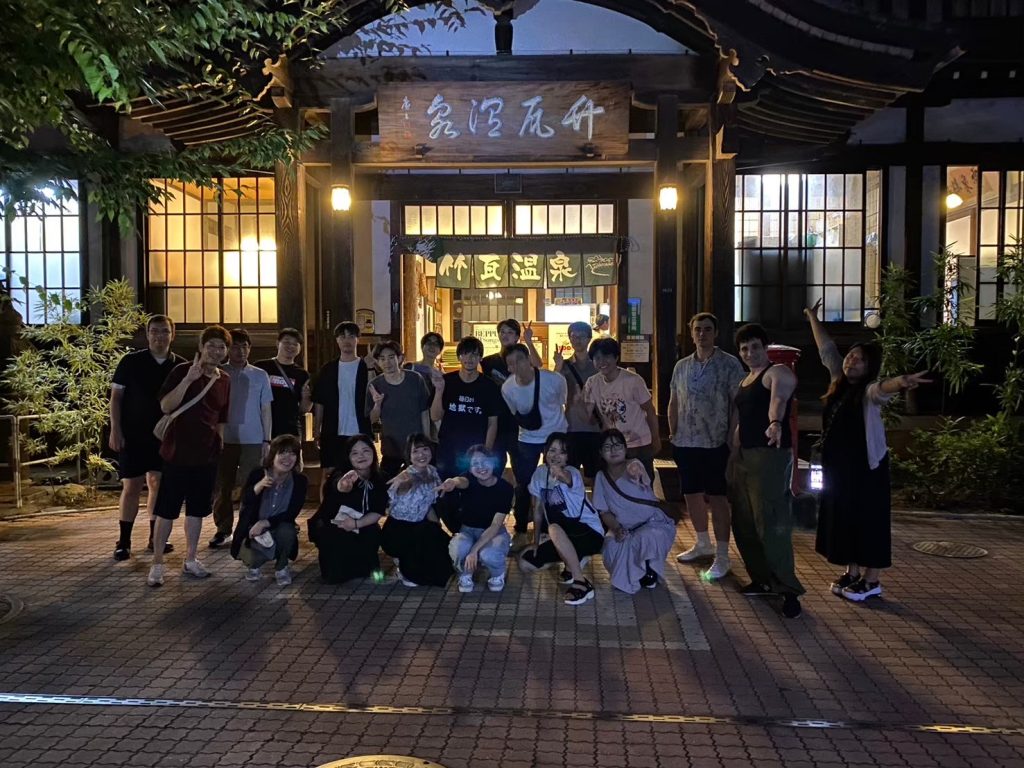
Beppu Jigoku Meguri (Hell Tour) – Part 2 (Umi Jigoku, Shiraike Jigoku, etc.)
On the second day, despite the temptation to relax at the hotel, we resumed our Hell Tour.
With clear skies and intense heat, walking through the various hot springs truly felt like a journey through hell!
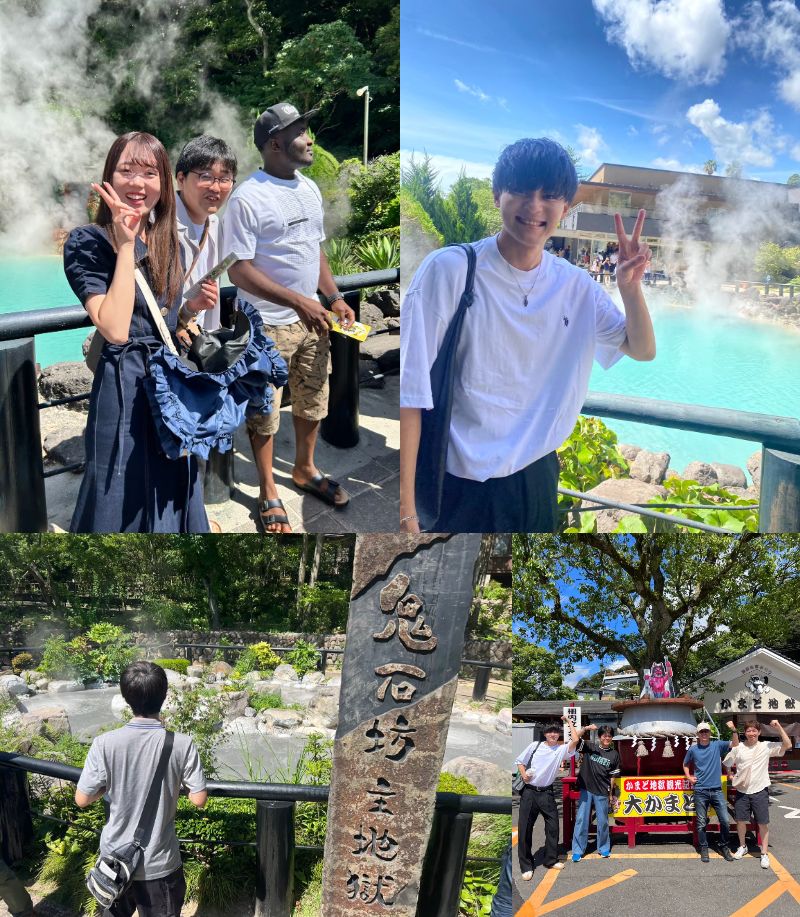

Lunch at “Geothermal Tourism Lab Midori”
For lunch, we visited “Geothermal Tourism Lab Midori”, where we enjoyed food steamed using natural geothermal heat while soaking our feet in a hot spring foot bath.
The footbath was so hot that many people ended up with bright red feet!
We also indulged in a delicious geothermal pudding for dessert.
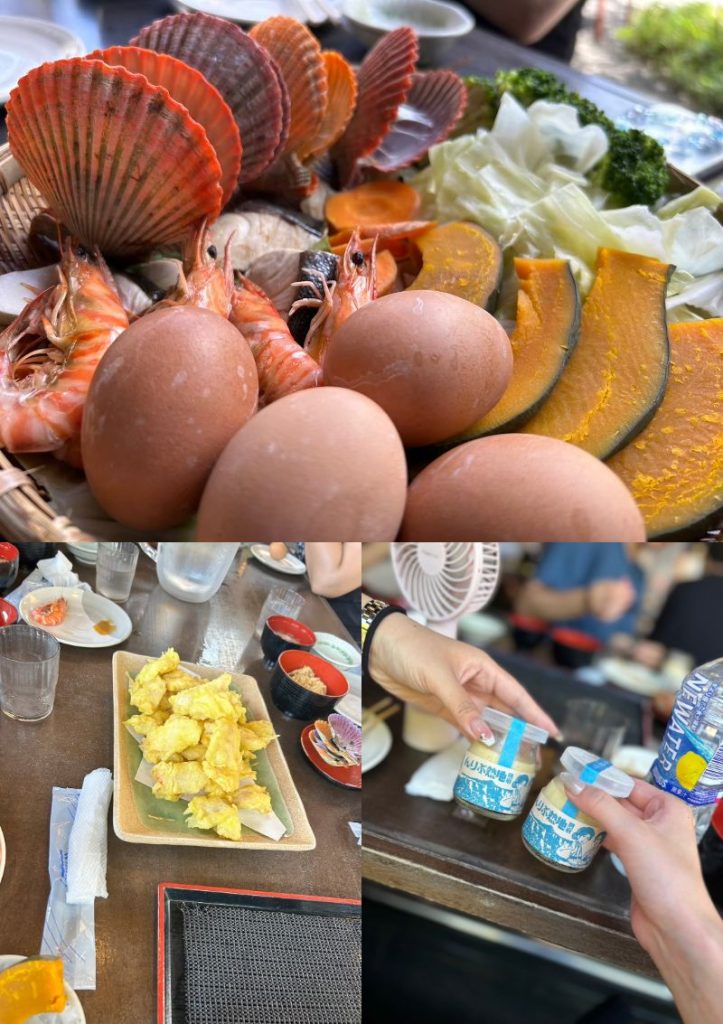
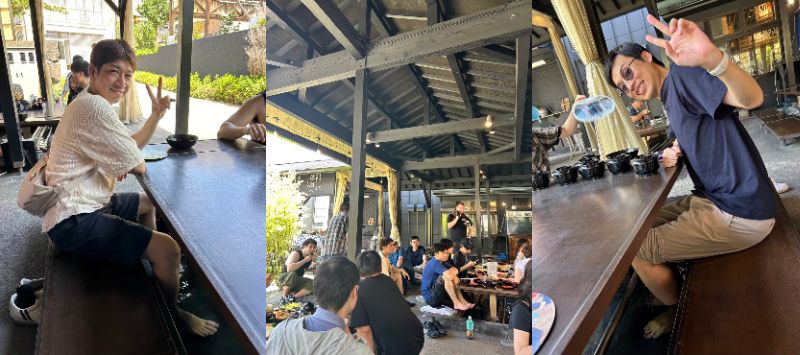
Iichiko Hita Distillery
Next, we visited the Iichiko Hita Distillery.
After a brewery tour, we explored the gift shop, which featured not only shochu but also a variety of other products.
Many participants picked up souvenirs to take home.
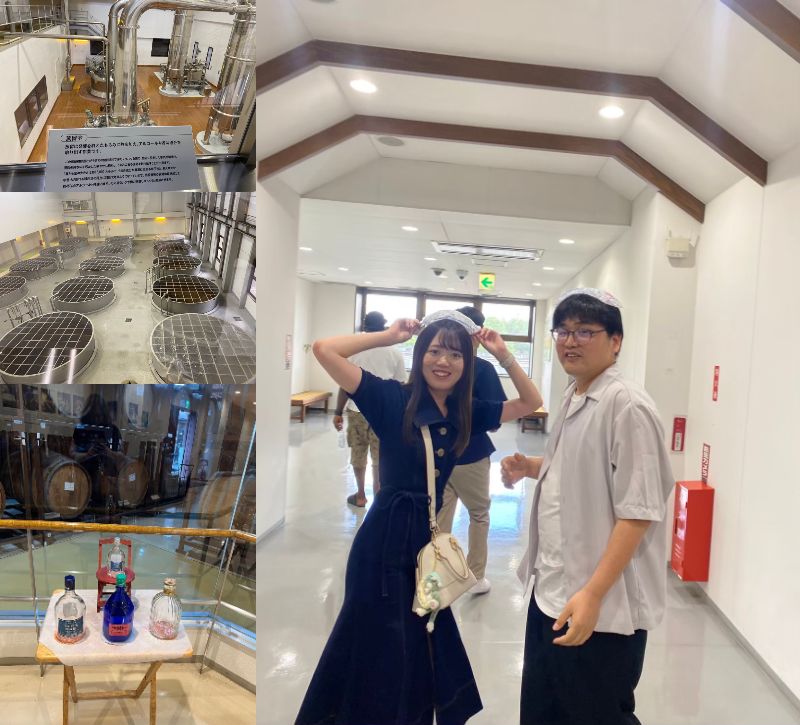

Hita Mameda Town
The last stop on Day 2 was Hita Mameda Town, a historical district with Edo-period architecture.
This area is a popular tourist attraction, and one of its most striking features was the massive “Hita Geta” (wooden clogs) standing over 4 meters tall!

Extended Stay Group
Previously, Dandelions’ company trips were limited to one night and two days, but this year, we leveled up!
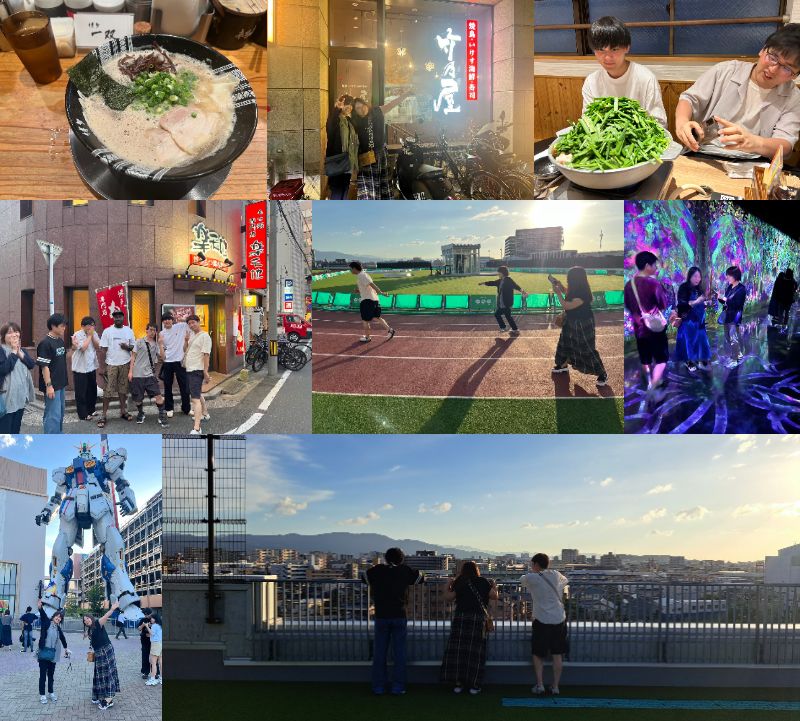
Since we had traveled all the way from Nagoya to Kyushu, some members decided to extend their stay and continue exploring for a third day.
Time flew by, and before we knew it, it was time to return to Nagoya.

Throughout the trip, participants actively uploaded and shared photos in our internal app’s album.
This time, we broke the record with over 800 photos—the highest number in Dandelions’ company trip history!
That alone speaks to how much everyone enjoyed and cherished this trip.
We look forward to sharing our next company trip blog with you—stay tuned!























